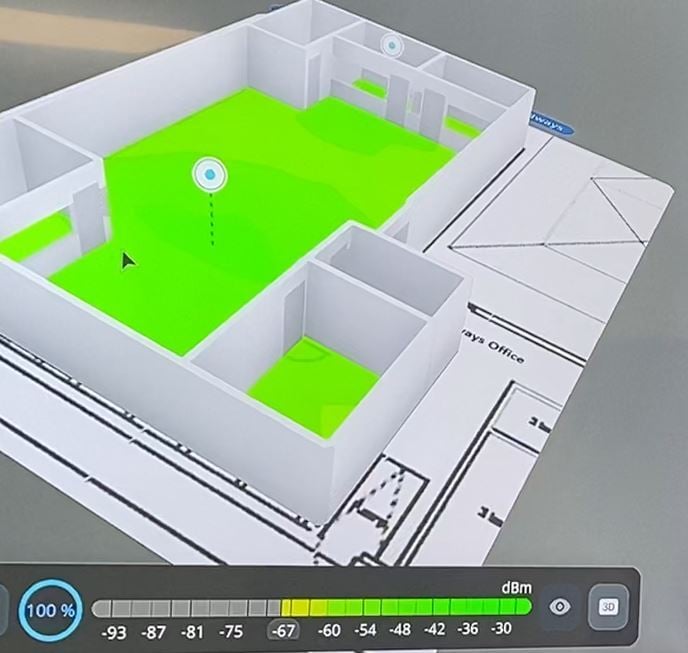What Is WiFi Design and Why It’s Essential for Reliable Connectivity
Intro
WiFi design is the strategic process of planning your wireless network so every device stays connected, and every location enjoys consistent coverage and performance. In modern institutions—with students, staff, guests, and a growing number of devices—it’s not enough to simply “have WiFi”. A professionally designed network ensures reliability, scalability and future-proof performance.
In this article we’ll explain what WiFi design entails, why it matters especially in high‐density and educational settings, and share practical tips to get it right.

What Is WiFi Design?
WiFi design involves assessing physical spaces, device densities, user behaviour and network demands, then planning access-point placement, signal coverage, channel management and capacity to ensure the wireless network delivers reliably everywhere.
Key elements of WiFi design include:
- Site survey and mapping of structural features—including walls, floors, and building materials
- Device and user density planning to determine how many devices will connect and in which locations
- Placement and configuration of access points (APs) for optimal coverage
- Radio-band planning, including 2.4GHz versus 5GHz selection and channel management
- Performance, interference, and future-proofing considerations
Why Is WiFi Design So Important for Schools and High-Density Environments?
Schools, colleges and other large institutions have unique challenges: many users and devices, frequently changing usage patterns, demanding applications, and the need for seamless connectivity. Without a good design, networks can suffer from drop-outs, inadequate coverage, slow speeds or poor user experience.
- A well-designed WiFi network supports:
- Simultaneous device use (student devices, teacher devices, guest devices)
- Cloud-based learning platforms, video conferencing and interactive tools
- High-density areas like lecture halls, libraries or cafeterias
- Scalability for future growth and new technologies (e.g., WiFi 6E/7)
Key Tips for Effective WiFi Design
Here are actionable recommendations to help you design a network that stands up to real-world demands:
1. Place your APs wisely
Where you position your access points (APs) is one of the single biggest considerations you will have when designing a WiFi set-up. You should ensure that your APs are not blocked by physical objects, and to take into account the effect of thick walls inside a building. Aim to have clear lines of sight from APs to areas which are commonly used by people connecting, and try and keep them at a distance from water, such as pipe networks.
2. ‘Aim high’ on your AP numbers
It might be said that you can never have too many APs, and while this could be exaggerating a little, it is undoubtedly the case that it is best to ‘shoot high’ and overestimate, rather than underestimate, the number of APs which you will need when you are planning the investment. If you do end up with surplus APs, you might need them in the long run should performance begin to degrade over time.
3. Use the 5GHZ radio band as primary
5GHZ radio bands are definitely the way forward when it comes to designing your WiFi set-up. You’ll be able to take advantage of much higher connection speeds than you would with 2.4GHZ, and get around the problem of the packed radio band which 2.4GHZ poses. You don’t want to end up competing with Bluetooth and other technologies for the same frequency range, so save yourself the hassle and use 5GHZ.
Common WiFi Design Mistakes and How to Avoid Them
Here are pitfalls to watch out for when planning a network design:
- Installing too few APs, which leads to dead zones or overloaded devices
- Ignoring building materials and physical layout (walls, floors, interferences)
- Failing to factor in device density or future expansion
- Relying solely on 2.4GHz band rather than prioritising 5GHz
- Neglecting to validate coverage and performance post-installation
Avoiding these mistakes up front can save time, money and frustration down the line.
How We Deliver Expert WiFi Design at Redway Networks
At Redway Networks, we specialise in wireless network design tailored to educational institutions, offices and high-density environments. Our process ensures you get a future-proofed solution with strong performance from day one.
Our WiFi design service includes:
- Predictive or on-site wireless site survey to map your building layout and usage patterns
- Access point placement and network planning using professional design software
- Performance simulation, interference analysis and capacity planning
- Deployment monitoring and post-install validation to ensure the network meets promised specifications
- Ongoing support and optimisation to adapt as technology or usage evolves
Key Takeaways
- WiFi design is the foundation of reliable wireless connectivity: place, plan and optimise for your environment.
- In high-density settings like schools, a robust design means consistent coverage, performance and scalability.
- Smart design includes placing APs thoughtfully, planning for enough devices, using 5GHz band, and avoiding common mistakes.
- With Redway Networks’ specialist service, you can be confident your network will handle today’s demands and tomorrow’s growth.
For more details about wireless networks, contact us or
speak to our expert team on 01908 046400


